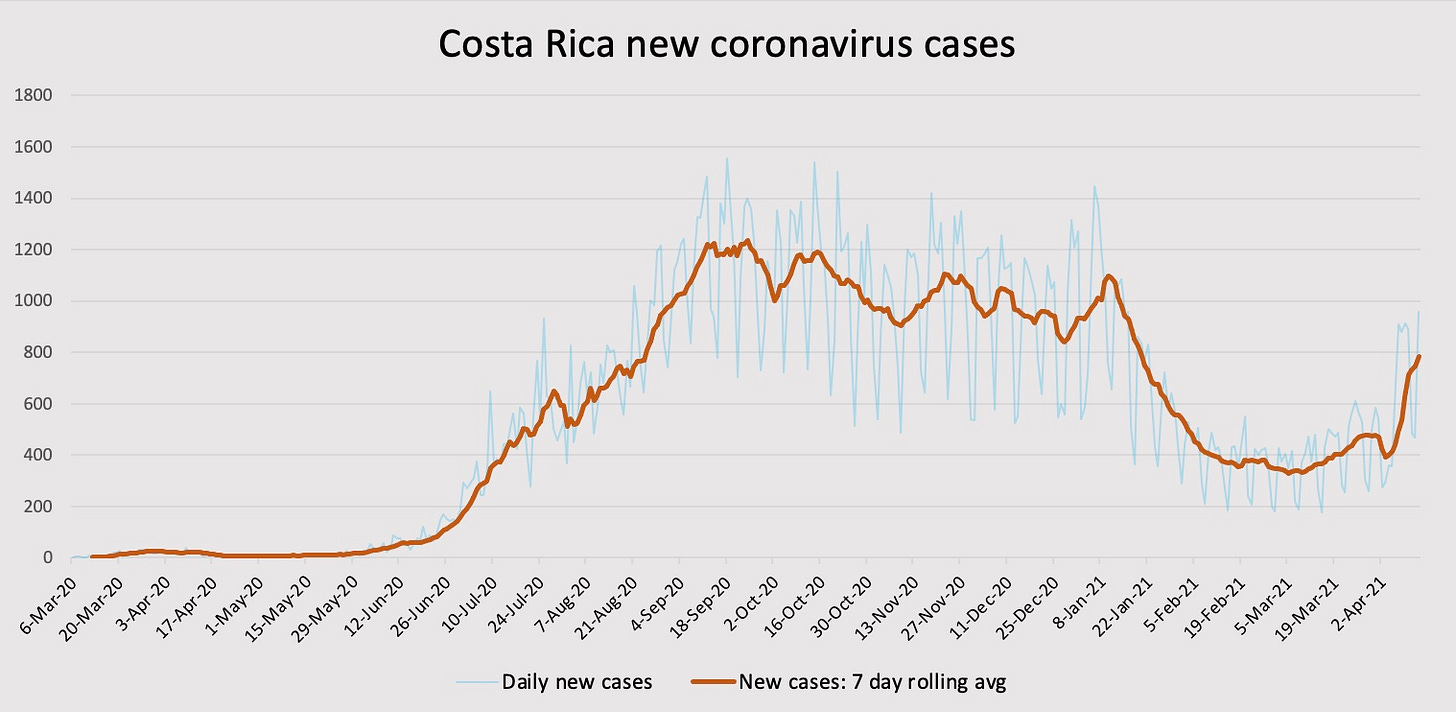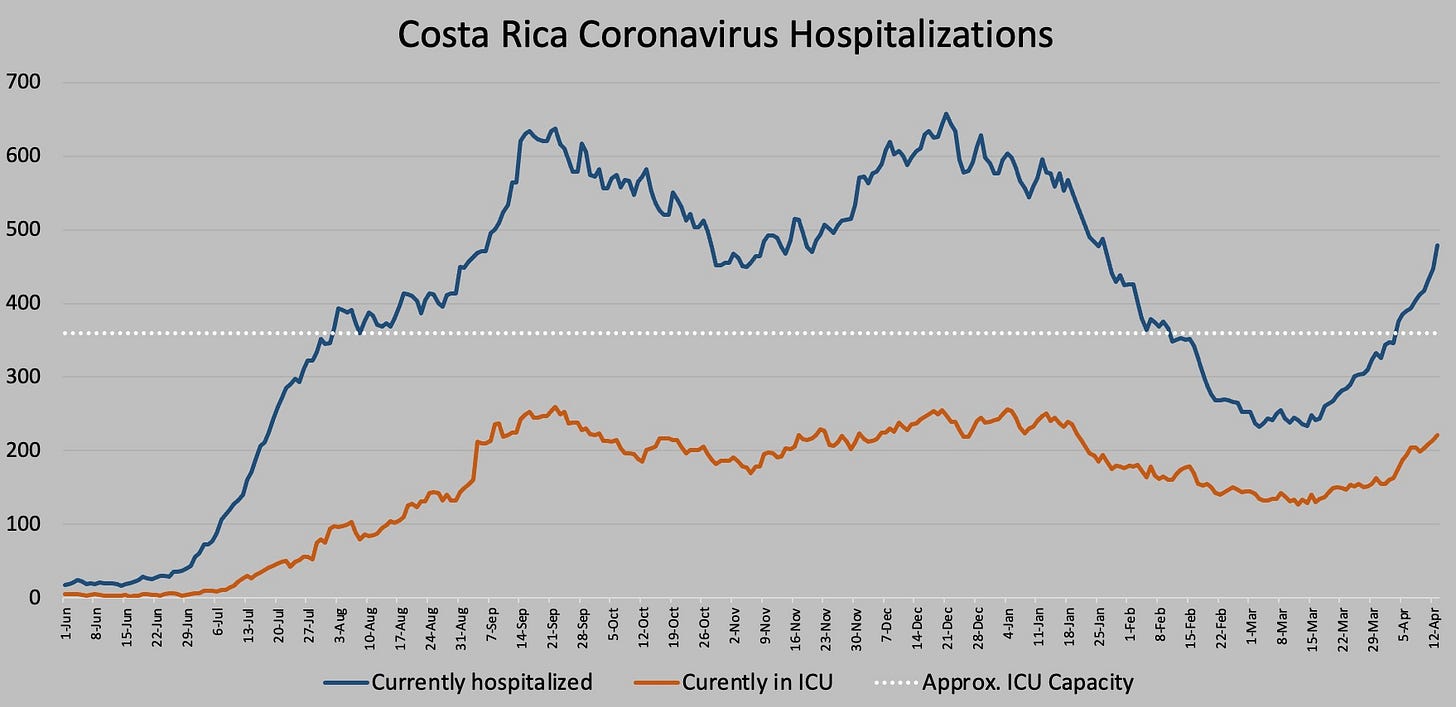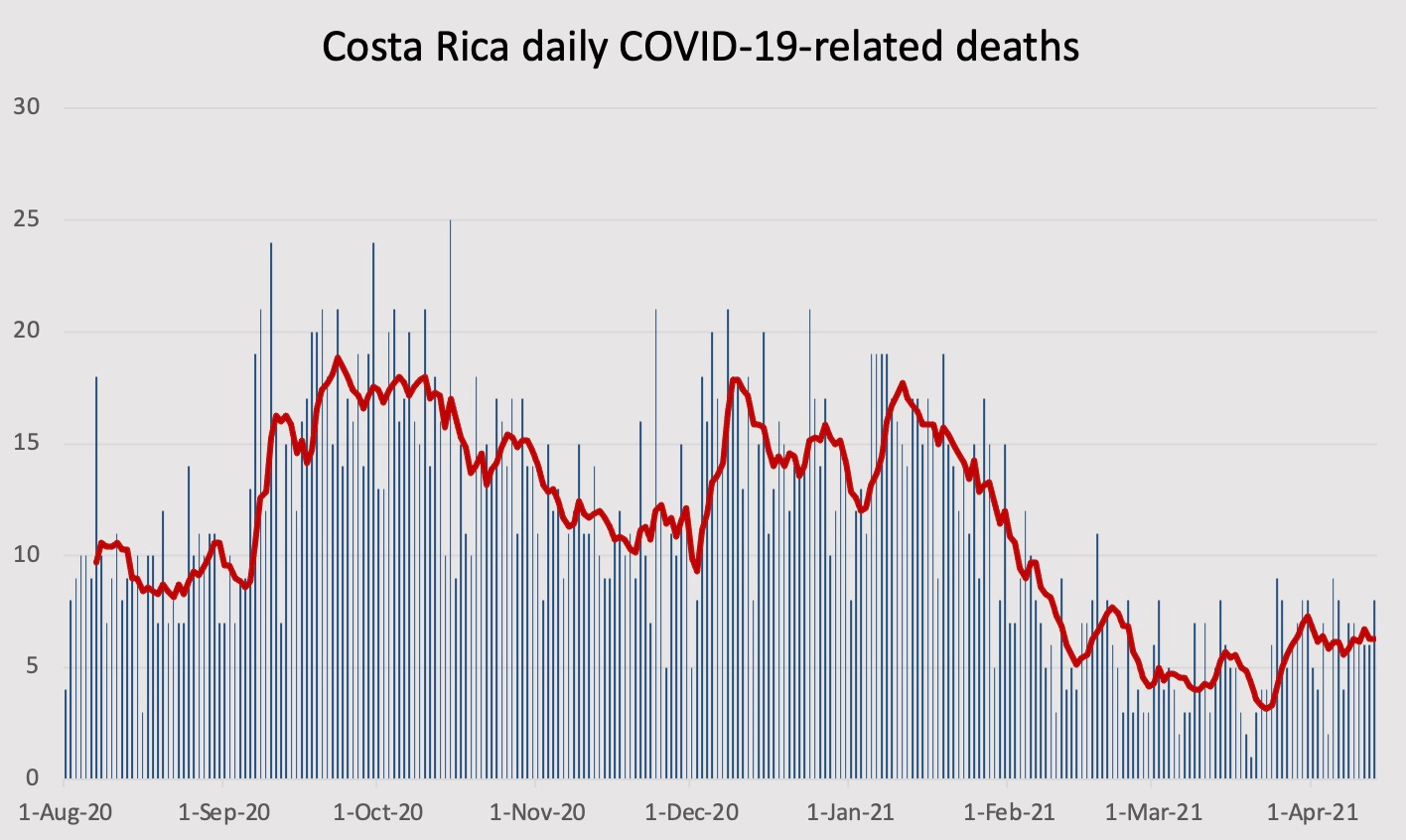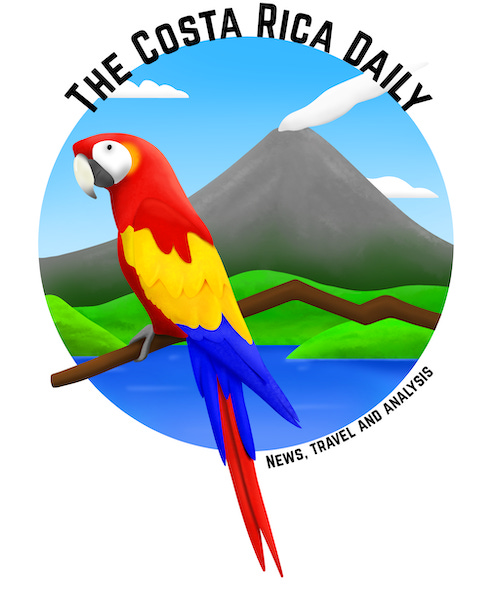Coronavirus in Costa Rica takes a turn for the worse
New restrictions are a possibility if trends continue.
It has been more than a year since the first coronavirus cases were detected in Costa Rica. The pandemic’s effects have been massive, from the loss of life, to the high unemployment, to the absence of some everyday pleasures.
Costa Rica has had relatively few restrictions for months. Most businesses and indoor activities are open — including dining, bars, casinos and movie theaters — as are outdoor attractions like national parks and beaches.
After encouraging reductions in cases and hospitalizations in February, Costa Rica’s coronavirus numbers have quite rapidly taken a turn for the worse. Let’s explore:
New cases are trending up
After averaging fewer than 400 new coronavirus cases per day in February, Costa Rica is averaging more than 600 new cases in April.
The seven-day rolling average of new cases in Costa Rica shows a sudden spike over the last two weeks:
Percent positive rate is rising
The spike in new cases is not because Costa Rica is conducting more tests. Instead, the test-positivity rate has seen a corresponding increase. Johns Hopkins explains:
The percent positive is exactly what it sounds like: the percentage of all coronavirus tests performed that are actually positive.
The percent positive will be high if the number of positive tests is too high, or if the number of total tests is too low. A higher percent positive suggests higher transmission and that there are likely more people with coronavirus in the community who haven’t been tested yet.
The World Health Organization says countries should aim for below a 5% test-positivity rate, as that would indicate the epidemic can be contained through testing and contract tracing. Costa Rica hovered near 10% in February and March, but that has quickly risen to 15% in April.
The R value is up
The R value measures to how many people an infected person will spread the virus, on average. A number higher than one indicates cases will continue to go up; a value smaller than one suggests cases will decrease.
The University of Costa Rica (UCR) estimated the R value in Costa Rica to be at 1.25 as of its most recent calculations from April 3. However, the Health Ministry this week gave an updated R value of about 1.4.
This means that every 10 infected people will infect 14 others, on average, foretelling an increase in the number of cases and hospitalizations over the coming weeks.
Hospitalizations and deaths are rising
These are, of course, the most important statistics of all. How many people are ending up in the hospital with Covid-19, and how many people are dying?
Hospitalization numbers are spiking, too. In one month, the number of people with Covid-19 in a Costa Rican hospital bed has more than doubled:
Deaths are a lagging indicator, because it usually take weeks after a Covid-19 diagnosis for a patient to die. Still, after trending downward for much of 2021, the number of daily deaths is creeping in the wrong direction:
How will Costa Rica respond?
The Health Ministry has hinted at reapplying driving restrictions if cases continue to spike. The idea would be to limit non-essential mobility, reducing Covid-19 spread as a result. Other measures, such as re-suspending in-person teaching, are also being considered.
Of course, since new cases and hospitalizations are already spiking, new restrictions will unfortunately come too late to prevent an increase in deaths in a few weeks.
All graphs were created by The Costa Rica Daily using official Covid data.
Support The Costa Rica Daily
Please support our 100% ad-free publication:






